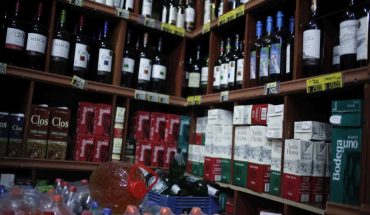The United States.- Kombucha, a tea-based fermented drink that for decades has been restricted consumption, now invades American grocery stores, supermarkets and cafes, driven by its low sugar content, its natural composition and the effects health benefits that many attribute to it. Sales of this drink, which taste and effervescence may baffle, reached $412 million in 2018 in the United States, according to the Nielsen Institute, an increase of 42% over the previous year.
From the neighborhood’s small grocery store to the grocery giant Walmart, most retailers now offer it, some with up to ten different brands and many flavors (ginger, lavender, turmeric, among others). For Alex Ingalls, a former cooker who launched her own brand, Pilot Kombucha in 2015, the popularity of this cloudy liquid containing traces of alcohol (less than 0.5% in stores) is due to “a set of factors”. Help. Click on the Google News star and follow us. There is the hard core of amateurs, he says, that they have long attributed virtues to the body, especially the digestive system, although there is no serious clinical study about it. The effect is to fermentation involving kombucha, which contains probiotics, living microorganisms capable of improving the quality of intestinal flora. But beyond the supposed health effects, for Ingalls the commercial take-off of the kombucha is due to the great advantage it has over soft drinks and even juices: its low sugar content.
Today, everyone is very careful about sugar and tries to drink less soda and even less light soda
“Because I don’t drink a lot of soda, when I want something that has a little flavor, not to drink only water, the kombucha is a good alternative,” explains Renata Ontman after leaving a class at Brooklyn Brainery workshop, where she learned to make herself the drink of the moment. “I always try to eat as healthy as possible and (the kombucha) is my snack at three o’clock in the afternoon,” says Sarah Gilberg, who also took the course of Cheryl Paswater, founder of the young brand Contraband Ferments. “It gives me energy.”
Four years after being one of the first to launch as a New York brand, Ingalls produces about 368,000 litres of kombucha a year, selling at 400 outlets in the region. It will soon open its first offices in Red Hook, Brooklyn, and is already expected to triple its production.
Pilot Kombucha pits on big rivals of this drink as GTs, the oldest brand in the Us market, founded in the mid-1990s, but also soft drink giants like Pepsico, which acquired KeVita in 2016, and Coca-Cola, which has a participation in Health-Ade. “I think there’s enough room for everyone” in this market, says Ingalls, for whom the kombucha will follow the path of craft beer, which also took bars and supermarkets by storming. “Each has its variants and versions on certain styles.” But unlike beer, home-made kombucha is much simpler, and rapid sales growth has been accompanied by a proliferation of amateur fermenters across the United States.
“I like the way it makes me feel and I like its taste, but I don’t want to spend money on it,” says Sarah Gilberg, a frequent kombucha drinker who wants to start self-supplying.
If you learn how to make your own kombucha you will stop buying two bottles per week, at a price of 3 or 4 dollars each. “We do a lot of workshops, classes for kids, training is where we’ve grown the most,” says Cheryl Paswater, the expert fermenter who teaches courses to those who want to learn how to drink. “People want to know more, they want to understand,” he explains. Paswater has been fermenting the drink for ten years and does not see a big difference between the artisanal and industrial versions. But even when some versions raise doubts about their ingredients or the marketing they use, he thinks “there’s a lot of amazing kombucha out there.”





